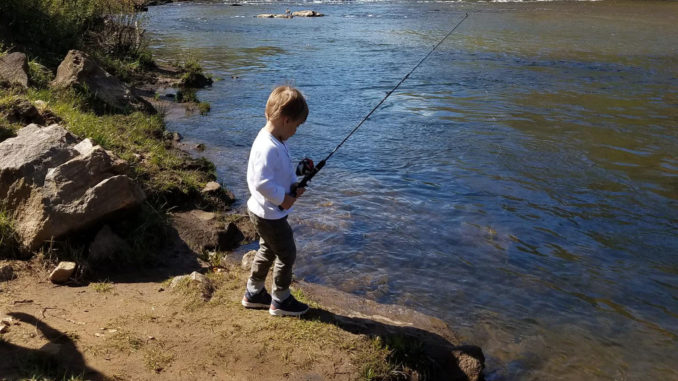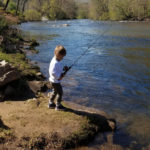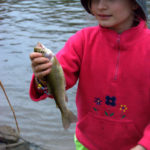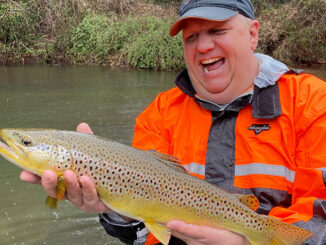
Hungry, stocked fish in select, popular streams makes for a great time for anglers of all levels
Beginning May 15 in South Carolina and June 2 in North Carolina, anglers will be able to keep their catches in delayed-harvest trout waters, up to five trout per day in South Carolina and seven in North Carolina, with no bait or lure restrictions.
The catch-and-keep rules will be in effect until Oct. 31 for delayed-harvest streams in South Carolina and Sept. 30 in North Carolina.
Opening day of the catch-and-keep season attracts a different group of trout fishers. They likely won’t be decked out in the latest Orvis fashions, fishing with top-of-the line fly rods, or custom flies. They’ll be fishing with red worms, night crawlers, wax worms, even corn niblets and marshmallows, because just about any type of bait is legal.
Implemented on a trial basis for select North Carolina streams began in 1992 and in South Carolina in 2002, North Carolina has 37 streams in the program; South Carolina has seven.
Delayed-harvest streams are heavily stocked with rainbow and brook trout and a lower number of brown trout for the catch-and-release seasons. The majority of those trout average 10 inches and weigh about a half-pound, with a few lunker fish thrown in for good measure. Most stream stockings end in June.
The stockings are generous. For example, the 5-mile upper section of the Tuckasegee River in North Carolina’s Jackson County received about 49,000 trout in five stockings. The lower section, in Swain County, received another 18,000.
Even with strict catch-and-release regulations, the N.C. Wildlife Resources Commission, estimates that a third of stocked trout are lost during the catch-and-release season. Some die due to improper handling and release, some migrate to other sections of the stream and some are poached.
Fishery biologists say approximately 50 percent of stocked trout are caught in the first two weeks of the catch-and-keep season. With the population drastically reduced, the remaining trout have a better chance of surviving during the summer months when stream levels drop, the water warms and food resources are more limited.
After the initial onslaught, fishing traffic on delayed-harvest streams usually tapers off because trout aren’t as accessible or as easy to catch. Even stocked fish develop a few stream smarts after they’ve been in the wild for a while.
Don’t be greedy
Creel limits usually are easily reached on opening day. Fishers who get out early often catch their limit in the first hour. Unfortunately, some take their limits home and return for a second or even a third limit. Wildlife officers monitor the streams on opening day, but violators are difficult to catch unless they’re caught with too many fish in their creels or ice chests. Violators caught with too many trout face replacement costs of the fish, fines, court costs, confiscation of fishing gear and loss of fishing privileges.
The best rule to follow is to catch and keep only what you will consume that day, not to see how many fish you can stock in the freezer and end up throwing out. Trout are best when they’re prepared and eaten fresh from the stream. Even one night in a refrigerator can affect the quality of the fish.
Delayed-harvest streams are especially popular with older fishers, youngsters and beginners. They provide an excellent conditions for beginners, for experimenting with different fly patterns and lures, or just for a pleasant day catching trout for dinner.
A big bonus for youngsters is that delayed-harvest waters in North Carolina will be open only to youths under 18 from 6 a.m. to noon on opening day. Youths under 16 are not required to have a fishing license or a trout-fishing privilege license.
I’ll be on the Tuckasegee early on June 2, fishing with my 11- and 14-year-old granddaughters. In past trips, they have caught enough trout for a fine dinner. Opening day is one of those rare times when they are almost guaranteed to catch a trout.
One of the most-popular programs implemented by the two wildlife agencies, delayed-harvest has avid supporters —and a very few dissenters — from all segments of the trout-fishing community, from the purist catch-and-release fly fisher to the die-hard bait fisher. It’s one of those program that offers something for just about everyone.
Stocking schedules, stream locations and maps, and a host of other pertinent information about trout fishing in North and South Carolina can accessed via the web at www.ncwildlife.org and www.dnr.sc.gov.







Be the first to comment